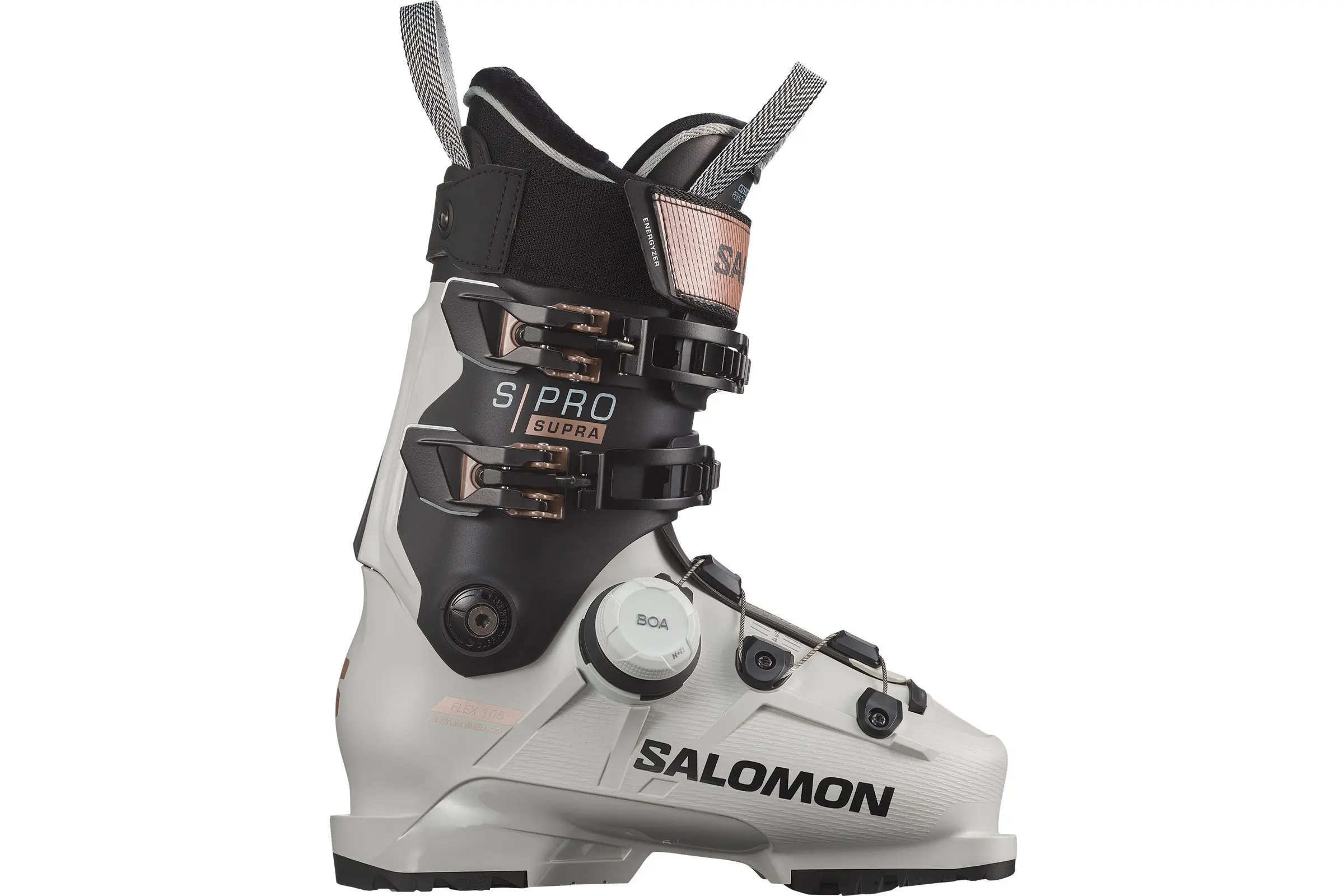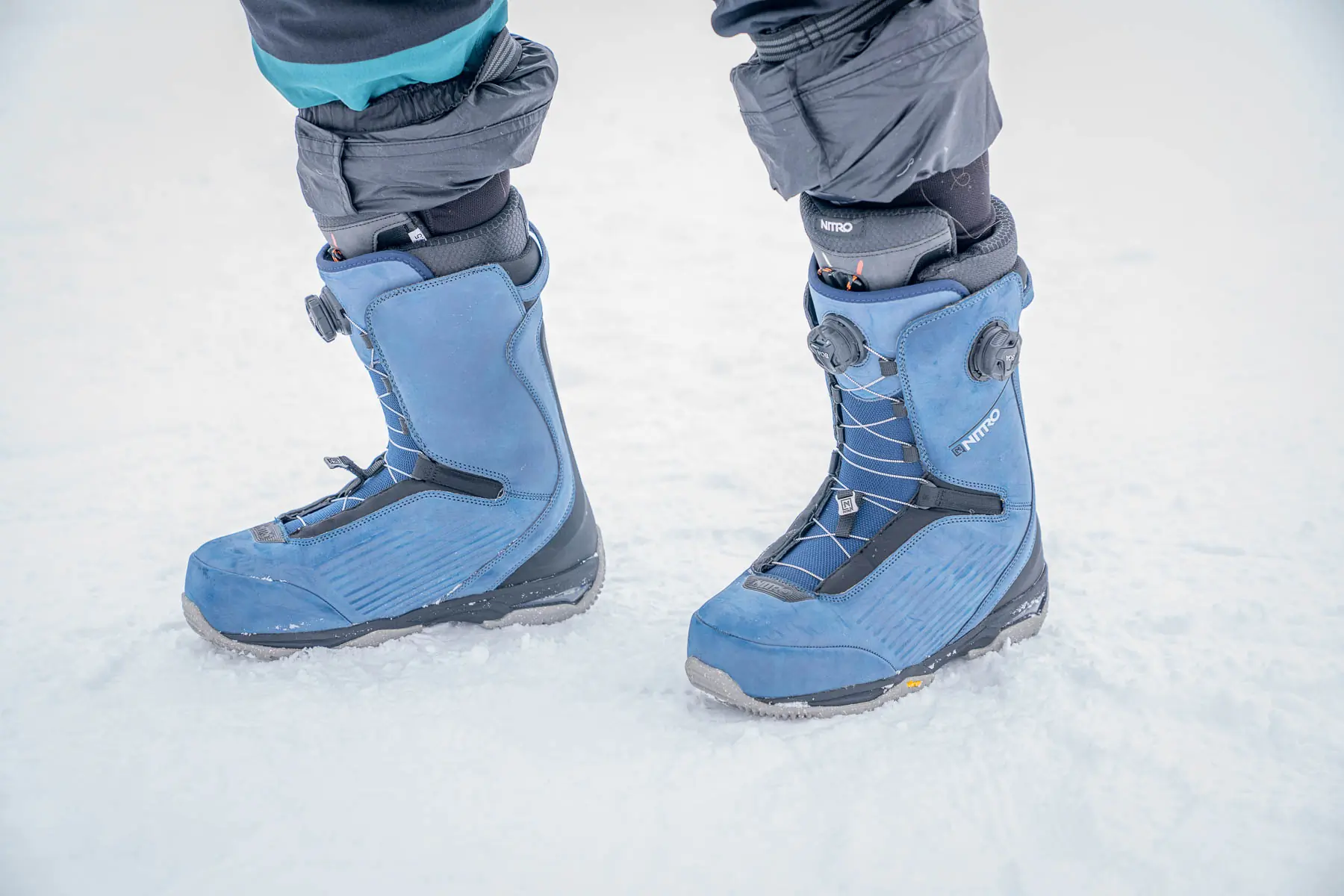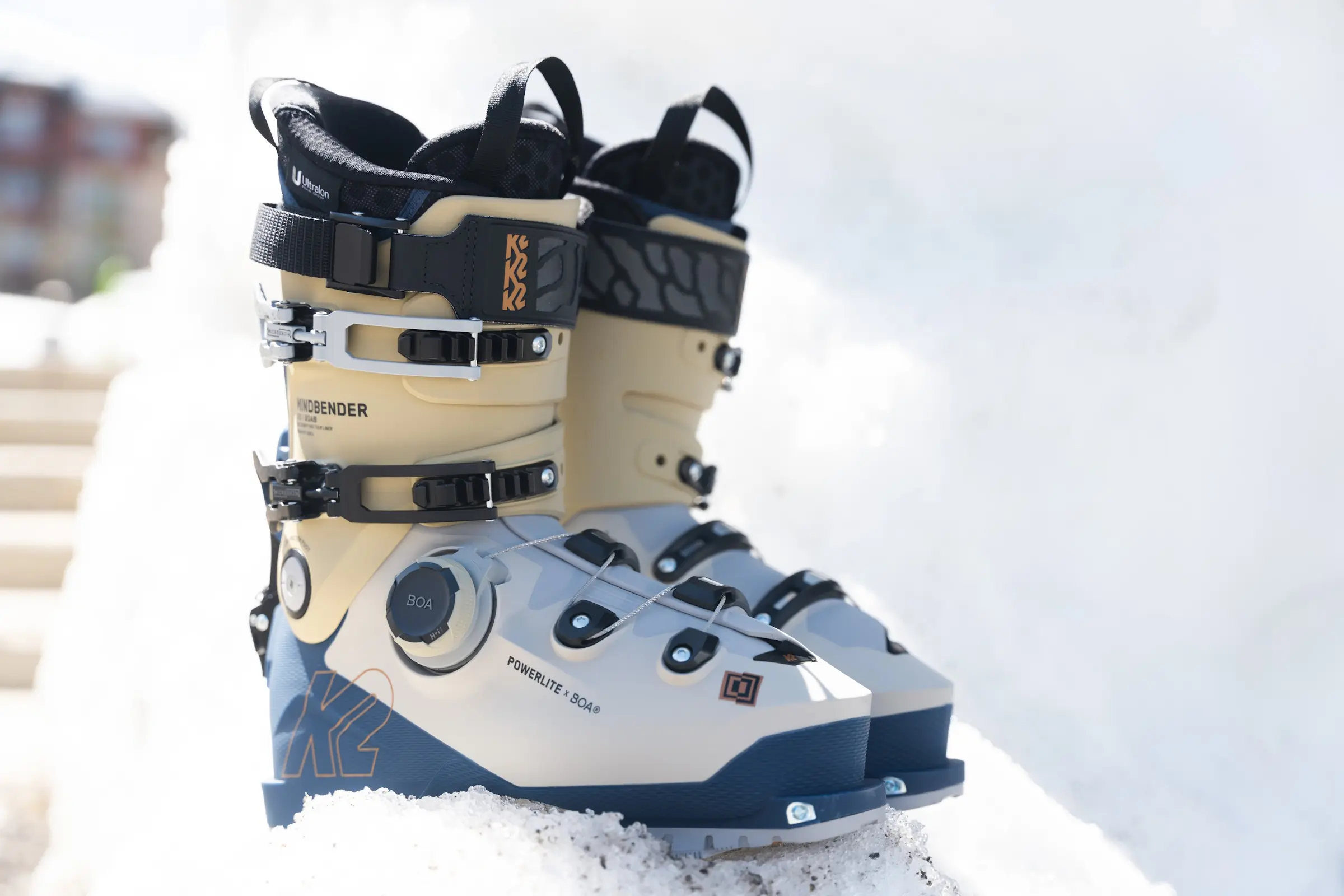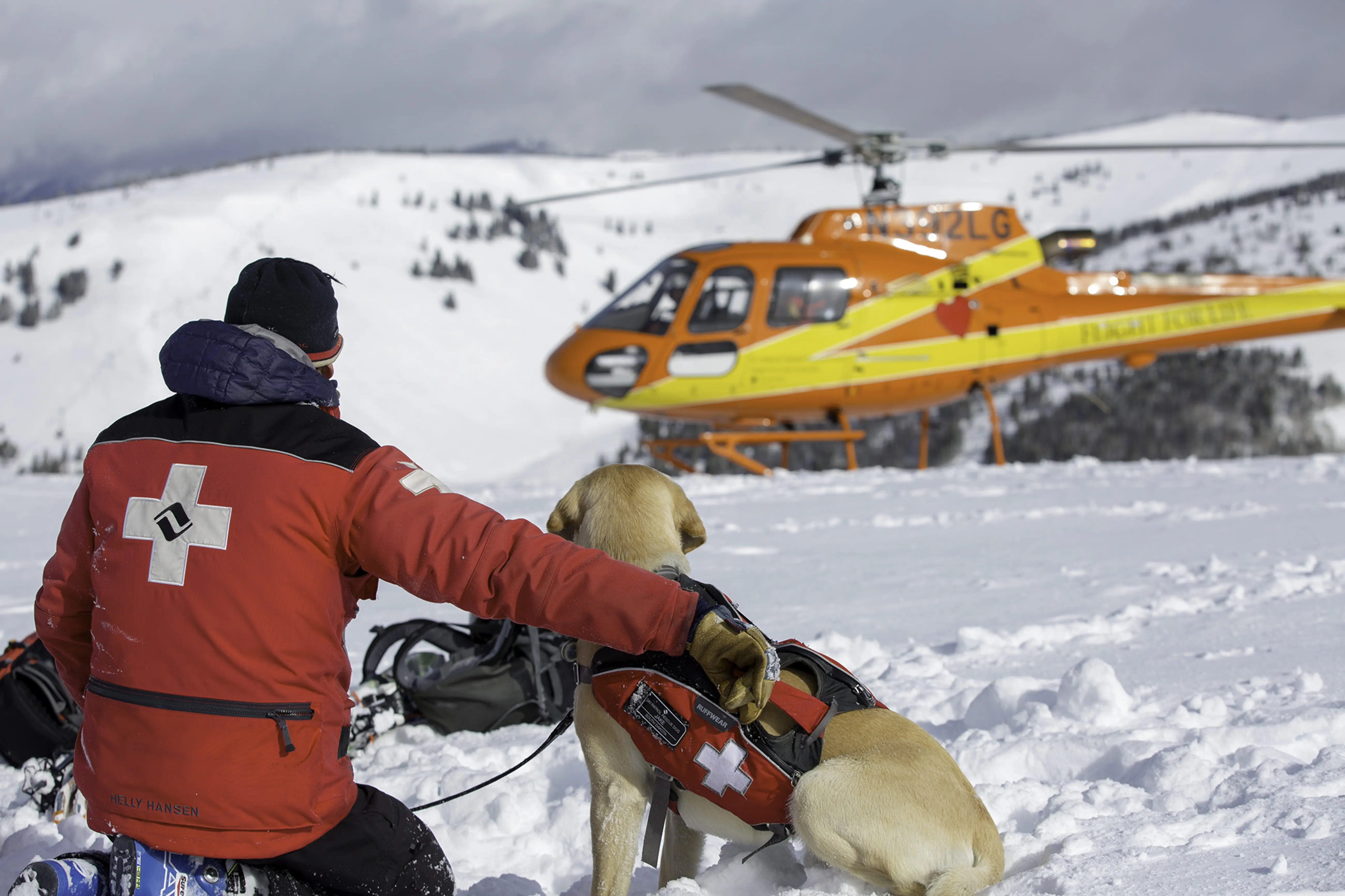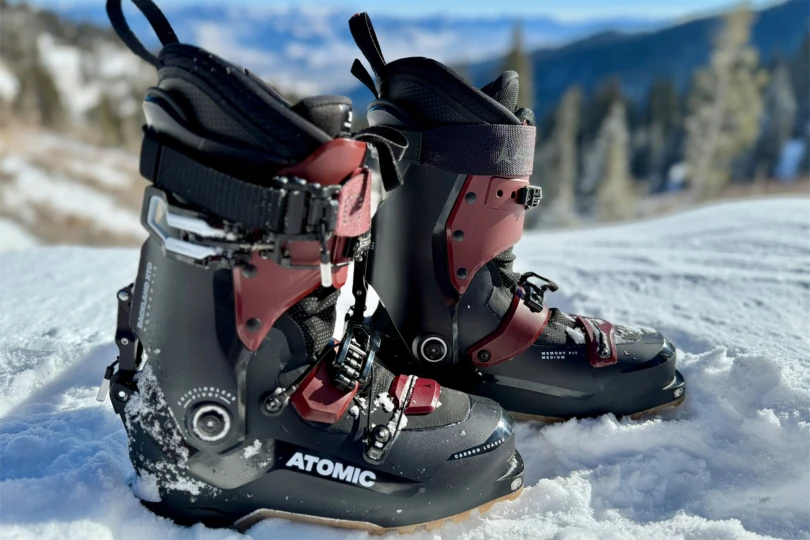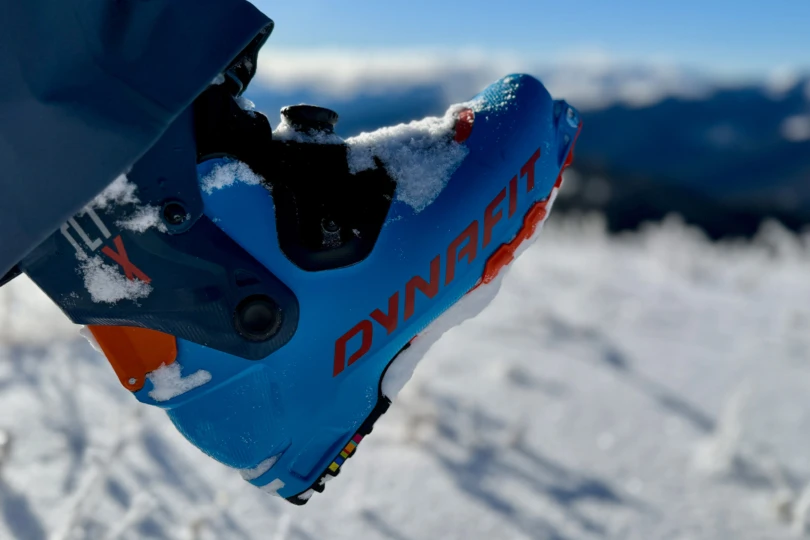BOA dials have been around for decades. But the latest trend among ski brands is incorporating BOA dials into alpine boots. Some of my larger-footed, harder-charging ski colleagues have already tested other boots with BOA. But I wanted to find out if BOA boots would work for me and my skinny feet. So, I got a pair of Salomon’s latest and stiffest women’s ski boots with BOA, the S/Pro Supra 105, to find out.
Salomon claims the S/Pro Supra has a low volume, narrower-last, and a fairly stiff flex. I was intrigued. Low-volume boots are meant for slimmer feet like mine to offer better control. But I’ve tried several low-volume boots in the past that did not fit me nearly as well as I’d hoped. My experience with stiff boots has been similar — there are appropriately stiff boots, and then there’s downright uncomfortable.
In the S/Pro Supra, it seemed like Salomon had found a stable middle ground.
In short: Over 4 months of skiing a range of beginner to advanced terrain (in fresh snow and hardpack), I poured a lot of time into the Salomon S/Pro Supra BOA boots. They performed incredibly well in terms of fit, comfort, and precision. The Salomon S/Pro Supra with BOA is a comfortable yet stiff, reliable boot for resort-goers. After testing, I’m convinced that the trend of alpine BOA dial ski boots is worth jumping on. They’re more comfortable, fit better, and provide more control than their buckled counterparts.
If you’re shopping for ski boots, check out GearJunkie’s guide to the Best Ski Boots.
- Materials: Polycarbonate HD shell, ExoWrap shell and liners, 2 Alpine BOA buckles, Alpine Boa dial, and cables and guides, custom Tongue, latex foam
- Type: BOA closure
- Last width: 100mm
- Flex index: 105 (also available in 95)
- Custom moldable: Yes
- Boot sole type: GripWalk (ISO 23223)
- Sizes: 22-27.5 Mondo
- Weight: 1,710 g
Pros
- Highly comfortable
- Impeccably exact fit
- Awesome micro-adjustment
- Dial is durable (boots survived a drop test from 6 feet)
Cons
- Narrower last
- Low-volume boot not for all foot types/skiers
- Limited women's sizes (out of luck for size 11 and bigger)
Salomon S/Pro Supra BOA Ski Boot Review

Fit and Feel
These boots fit very well for narrow to medium feet. Especially considering the liner and everything within the boot can be molded and customized, I thought the fit felt superb. If you know a lower-volume boot is typically the right fit for you, I’m confident your feet will feel right at home in these boots.
Now here’s the rub. Boot comfort and fit are highly subjective, depending on your foot type. My feet are bony, skinny, ultra-narrow, and small girth. Case in point: As far as width goes, my feet are in the first percentile. So, a boot with a low-volume fit is important for a skier like me for better boot control.
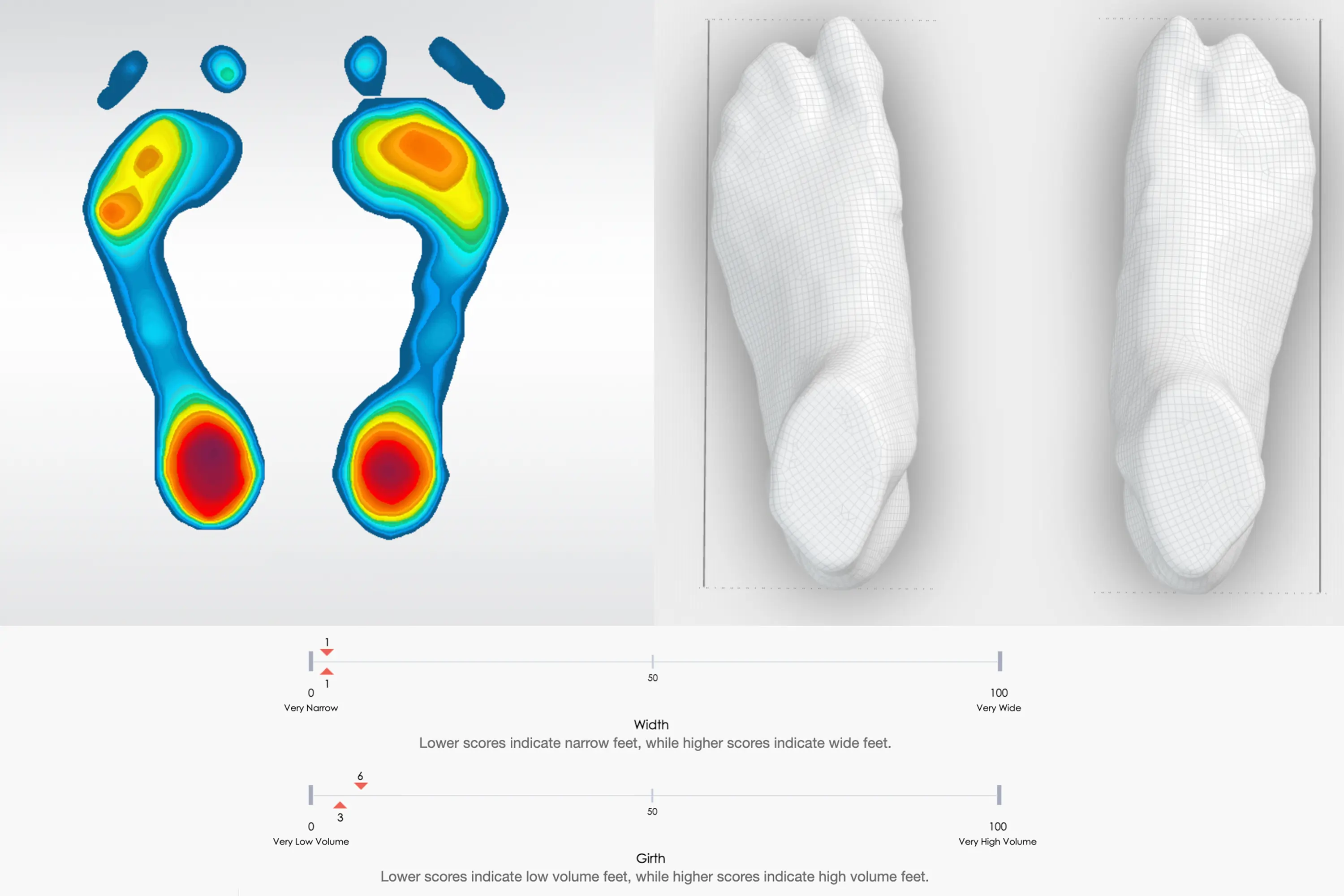



In the Salomon S/Pro boots, it’s not just the BOA dial doing all the work to “fix” fit. The shell walls are actually thinner in some places to create more contact. That, plus the Exowrapping component of the liner, provides a notably more precise foot wrap.
All of these components were huge wins in my book. In the Salomon S/Pro Supra boots my feet are making contact, being hugged, and wrapped in all the right places. In my opinion, nothing was overlooked to make this boot really adjustable and catered to lower-volume feet.
If you look closely at my foot scan (above), my right foot is also bigger than my left. Apparently, that’s common in 60% of the population, according to foot blogs. I run, bike, hike, ski, and climb. So, in general, my feet are pretty worked.
Sure, occasionally I treat myself to a foot soak or massage. But in general, my feet are active, moving, plodding, flexing, and scrambling around. They are well-worn and no stranger to uncomfortable ski boots.
After skiing in the S/Pro Supra, I have a new bar for comfortably fitting ski boots. My new goal is not to settle for subpar boots.
Testing While Downhill Skiing
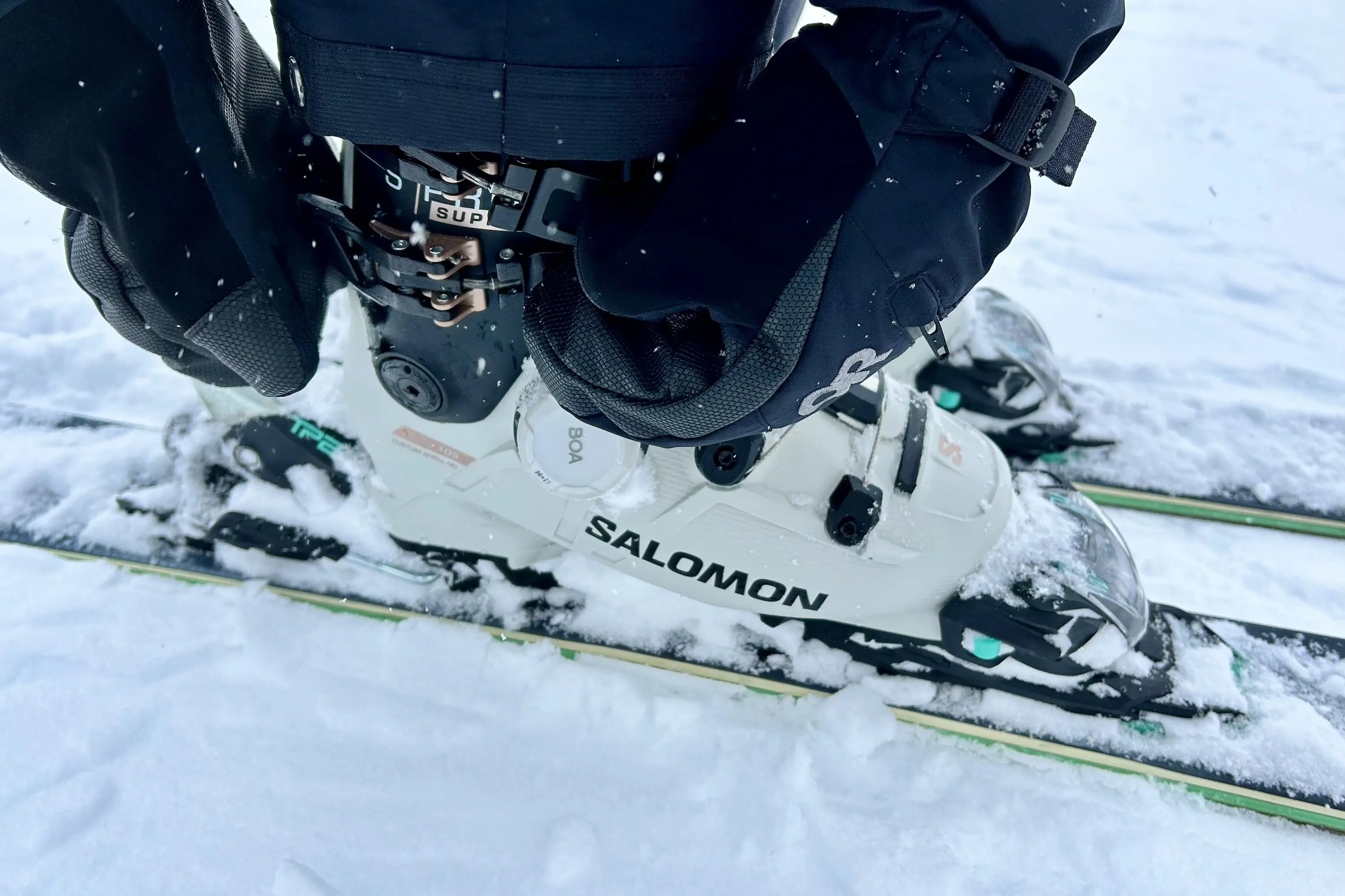



One huge pro of BOA boots could also be seen as a downside: It takes a bit more time for fitting and micro-adjustment up front. But later, you won’t be fiddling around with buckles while you’re skiing.
I have loved skiing in these boots. If I’m not on my backcountry setup in my Tecnica Cochise boots, I’m in these. They genuinely feel different — better for my feet — than buckled boots.
That’s due to the lack of downward pressure. Instead of buckles on top of the boot applying a downward force to provide a tight fit, the BOA cables wrap the foot. The constriction of the “wrapping” element is really noticeable compared to traditional buckles.
This boot fits and feels better on my feet, even across the talus bone and narrow top of my foot. They hug rather than compress.
Overall, the S/Pro Supra’s comfort on the downhill is on par with its overall comfort. I never felt a crunching from the buckles or cables, never felt rubbing or soreness from the fit. You can easily increase or back off on the tightness of the laces. The incremental clicks make it easy to dial in on a near-perfect fit.
My first week testing these boots, I wore them straight out of the box. 10 out of 10.
Technical Components in Salomon S/Pro BOA
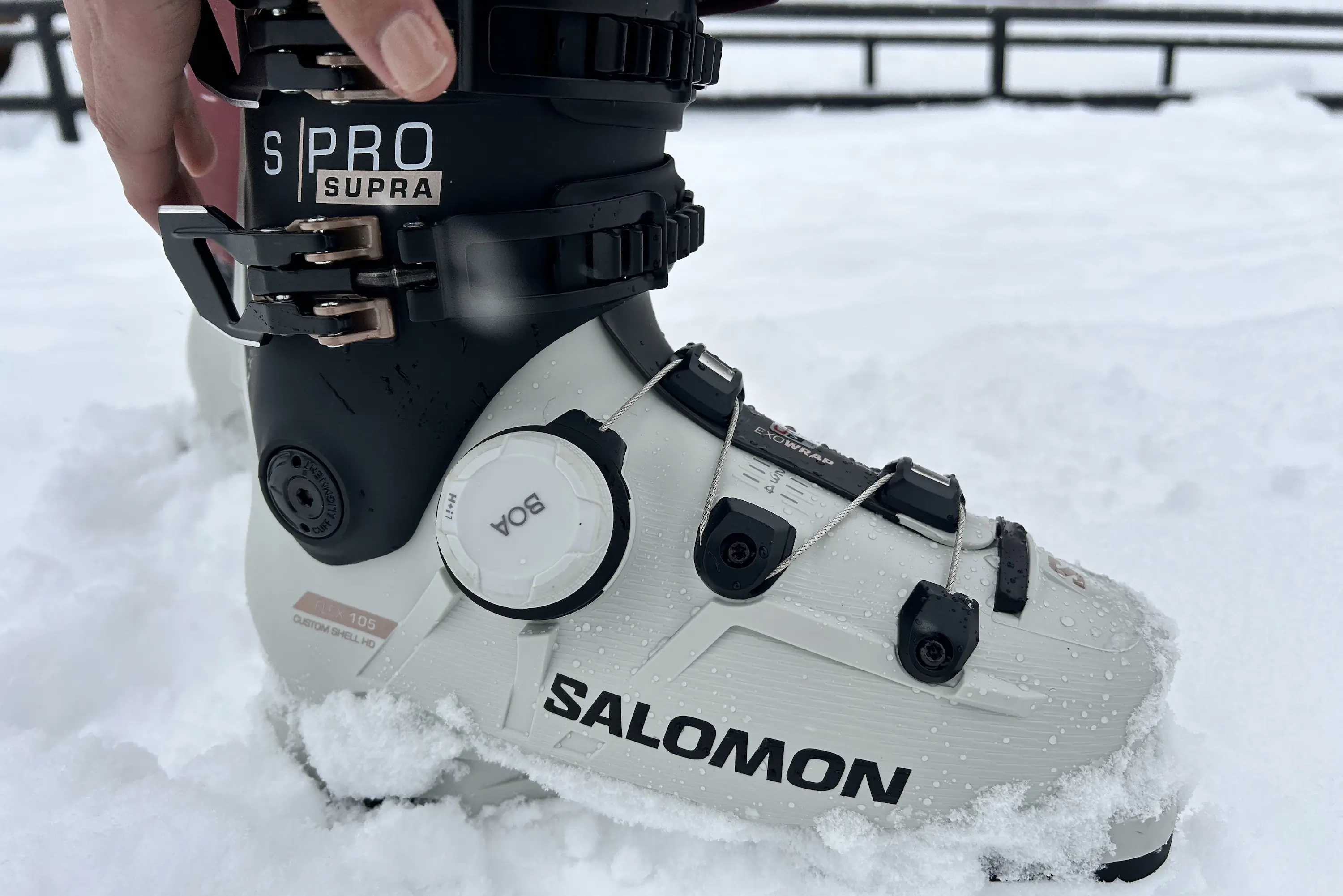



The BOA dial is the hallmark and most notable feature here. It’s a big part of why I am reviewing these boots — and why they are great. But there are a few other features of the S/Pro worth touching on.
The Salomon S/Pro Supra BOA is offered in a 95 and 105 flex. I tested the 105s. This is a medium to hard stiffness boot best suited for intermediate to advanced skiers. It’s not going to offer a ton of play or flexibility. But it will offer more power and stability at speed.
Unlike other stiffer boots I’ve tried, I actually thought these felt comfortable.
What I noticed most while testing on my home mountains in Colorado (and on a recent trip with Ski Utah), was the secure heel, the “exo” foot wrapping, and the insert inside the polyurethane/custom HD shell. Shifting the exo wrap and liner around, and getting the boot molded and the tongue adjusted (with a range of several millimeters so it can fit more people), all helped dial fit.
This liner includes a custom tongue that can be dismantled and is entirely customizable. (You’ll find this in several other existing Salomon S/Pro line boots.)
I also noticed the power spine, which links the cuff and the shell to provide strong back support, and “powerful forward flex no matter the snow conditions.” There are two options here: direct and performance. Essentially, it’s a small way to adjust to a stiffer or softer feel. Performance was softer, direct was slightly stiffer, more noticeable, and my choice on hardpack and steeper runs. While I didn’t notice a huge difference between the two in testing, it’s a nice feature.
Salomon also slightly altered the footbed in the S/Pro BOA and its other 2024 models to “Light+” (made with lighter foam). I’m on my feet all the time when I’m not riding my desk and I found the footbed/included insole comfortable. I’ve probably walked at least 4-5 miles to and from parking lots and lift lines in these boots.
Also, iIt is an incredibly easy boot to step into. I was even able to boot up at the car without sitting down.
Salomon S/Pro BOA Ski Boot: Conclusion
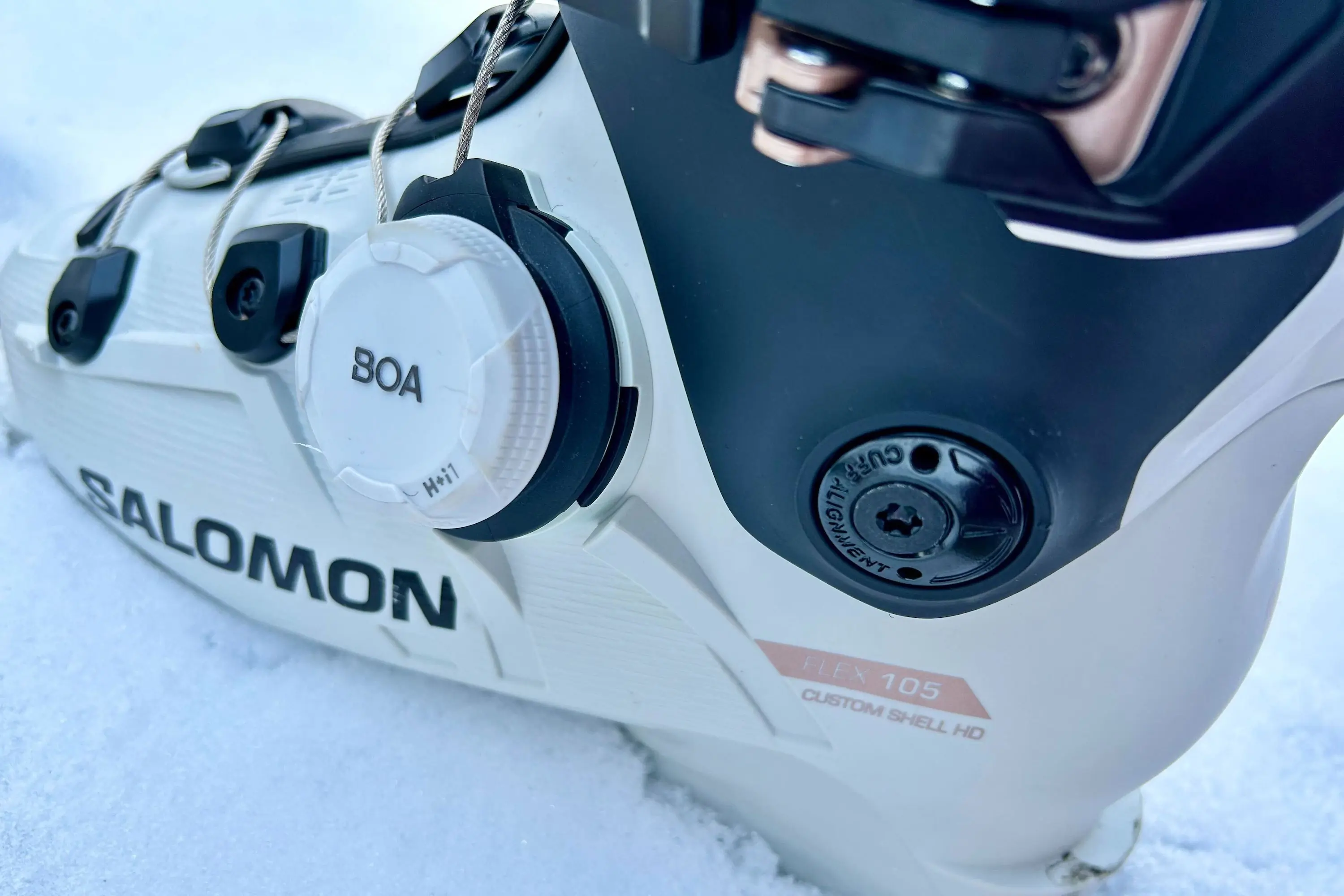



BOA made sure to cast a wide net of models, alpine and touring options, men’s and women’s sizes, and flex options. Of the handful of brands BOA partnered with in the first year, we’ve tested nearly all of them.
But even before the boots launched, only one brand interested me: Salomon’s. Why? Historically, the brand’s boots have fit my feet the best. Some of the top “low-volume” boots on the market are the K2 Mindbender, the Salomon S/Pro, and the Tecnica Cochise (I’ve skied in all three). BOA has added dials to the former two, cementing my decision that there was a BOA boot worth testing.
The result? I found a boot that was more comfortable for my feet than traditional boots. The Salomon S/Pro Supra 105 is highly adjustable, sturdy, not too heavy, and best of all, offers a fit like no other. (However, unlike the K2 Mindbender, a similar low-volume boot, these aren’t compatible with tech bindings.) These are boots I plan to ski at resorts in for many years.
If the dial components (like the cable “laces”) ever wear down or break, I’ll follow up with BOA for replacements. Like the BOA Fit System on any other piece of footwear, BOA has already tested extensively for stress and failure points. If all else fails, it does have replacement parts, which the customer (moi!) can interchange themselves — without having to send them for repair.
But hopefully, I’ll never have to.

